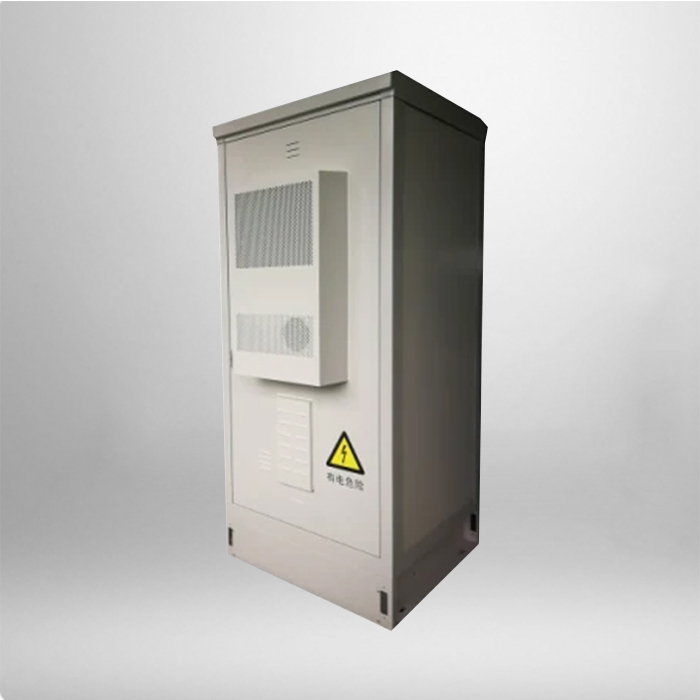
In the vast and complex world of modern telecommunications, outdoor telecom cabinets stand as silent yet crucial sentinels. These cabinets play a pivotal role in ensuring the seamless operation of communication networks by housing and protecting essential equipment, despite the challenges posed by the outdoor environment.
The Role and Significance
Outdoor telecom cabinets are designed to accommodate a wide array of active and passive telecommunications equipment. This includes servers that manage data processing, routers that direct data traffic, switches for network connectivity, and power supplies to keep everything running. In the era of expanding 5G networks, fiber – optic deployments, and the Internet of Things (IoT), these cabinets are the cornerstone of the infrastructure, enabling connections in urban centers, suburban areas, and even the most remote rural locations.
Design and Construction Features
Material Selection
The durability of outdoor telecom cabinets starts with the choice of materials. Galvanized steel is a popular option due to its strength and natural resistance to corrosion. The zinc coating on galvanized steel acts as a sacrificial layer, protecting the underlying steel from rust even when the surface is scratched. Stainless steel, especially grades like 304 or 316, is also commonly used, offering excellent corrosion resistance, especially in harsh or coastal environments where exposure to saltwater and moisture is high. Aluminum is another alternative, known for its lightweight nature, which can be beneficial for ease of installation and transportation. Additionally, aluminum has good corrosion resistance and is often used in cabinets where weight is a critical factor, such as in pole – mounted installations.
Structural Integrity
Outdoor telecom cabinets are engineered with a robust structural framework. They are designed to withstand various mechanical stresses, including wind loads, impacts, and vibrations. The cabinets are often constructed with thick – walled panels and reinforced corners to enhance their strength. Some cabinets are even built to meet specific seismic requirements in earthquake – prone regions, ensuring that they remain intact and functional during and after tremors.
Weatherproofing
Weatherproofing is a key aspect of outdoor telecom cabinet design. These cabinets are typically rated according to international standards such as IP (Ingress Protection) and NEMA (National Electrical Manufacturers Association). An IP65 – rated cabinet, for example, is dust – tight and protected against water jets from any direction. NEMA 4X cabinets offer corrosion – resistant protection against wind – blown dust, rain, sleet, and hose – directed water. To achieve these ratings, cabinets are equipped with high – quality gaskets around doors and seams to prevent water and dust ingress. The doors are often designed with multiple – point locking systems to ensure a tight seal and also add an extra layer of security.
Thermal Management
Telecom equipment generates heat during operation, and effective thermal management is essential to prevent overheating, which can lead to equipment failure and reduced performance. Outdoor telecom cabinets employ several strategies for thermal management:
Ventilation Systems: Many cabinets feature passive ventilation, with perforated panels or vents strategically placed to allow for natural air circulation. Hot air rises and escapes through the top vents, while cooler air enters through the bottom vents. In more demanding applications, active ventilation systems are used, which include fans that are either thermostatically controlled or operate continuously to enhance air movement.
Heat Exchangers: Heat exchangers are another common solution. These devices transfer heat from the inside of the cabinet to the outside without allowing direct air exchange, which helps to keep out dust and moisture. There are two – phase heat exchangers that use a refrigerant – like substance to absorb and dissipate heat more efficiently.
Air Conditioning Units: In extreme temperature environments, especially in hot climates, air conditioning units may be installed in the cabinet. These units can precisely control the internal temperature, ensuring that the telecom equipment operates within its optimal temperature range.
Security Features
Outdoor telecom cabinets house valuable and sensitive equipment, making security a top priority:
Physical Security: Cabinets are equipped with sturdy locking mechanisms, ranging from traditional key – locks to more advanced electronic access control systems. Some cabinets also have anti – vandal features, such as reinforced doors and tamper – resistant hinges, to prevent unauthorized entry.
Surveillance and Alarms: To further enhance security, surveillance cameras can be installed either inside or outside the cabinet. Motion sensors and intrusion alarms can be integrated into the cabinet’s security system, which can send alerts to monitoring centers in case of any suspicious activity.
Electromagnetic Shielding: In some cases, outdoor telecom cabinets are designed with electromagnetic shielding to protect the sensitive electronics inside from external electromagnetic interference, which could potentially disrupt the operation of the equipment.
Applications
Mobile Network Base Stations: Outdoor telecom cabinets are an integral part of mobile network infrastructure, housing equipment for 2G, 3G, 4G, and 5G base stations. They enable the seamless transmission of voice and data signals between mobile devices and the core network.
Fiber – Optic Networks: In fiber – optic deployments, these cabinets are used to house fiber – optic termination equipment, splitters, and other components. They play a crucial role in the distribution of high – speed broadband services, whether it’s Fiber – to – the – Home (FTTH), Fiber – to – the – Building (FTTB), or Fiber – to – the – Curb (FTTC).
IoT and Smart City Applications: With the growth of IoT, outdoor telecom cabinets are used to support various smart city initiatives. They can house gateways and edge computing devices that collect and process data from a multitude of sensors, such as traffic sensors, environmental monitors, and smart meters, enabling efficient management of urban services.


